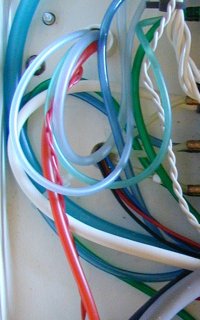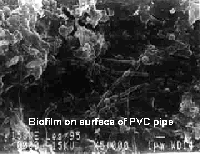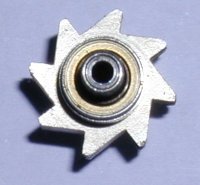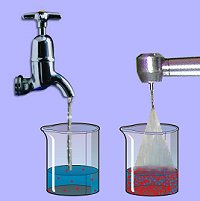
DENTAL UNIT WATERLINES
Dental unit waterlines (DUW) are often just a few millimetres in diameter.
Water flows slowly or not at all and is often warmed up to body temperature.
These are perfect conditions for the growth of a so-called biofilm layer.
The biofilm is a slimy layer of minerals, algae and fungi.
Even in brand new dental waterlines these layers form within a couple of weeks.
The suspicion that the majority of Dutch dental offices uses contaminated water
was confirmed on March 25 -2001.
At that time the Dutch Journal for Dentistry published ( NT 56 Annual nr. 6 page 224 )
the results of a university study carried out by ACTA university students.
Fifty Amsterdam dentists volunteered to explore the safety of their dental unit water supplies in that study.
The outcome was alarming : of 50 offices only 2 turned out to be safe.


